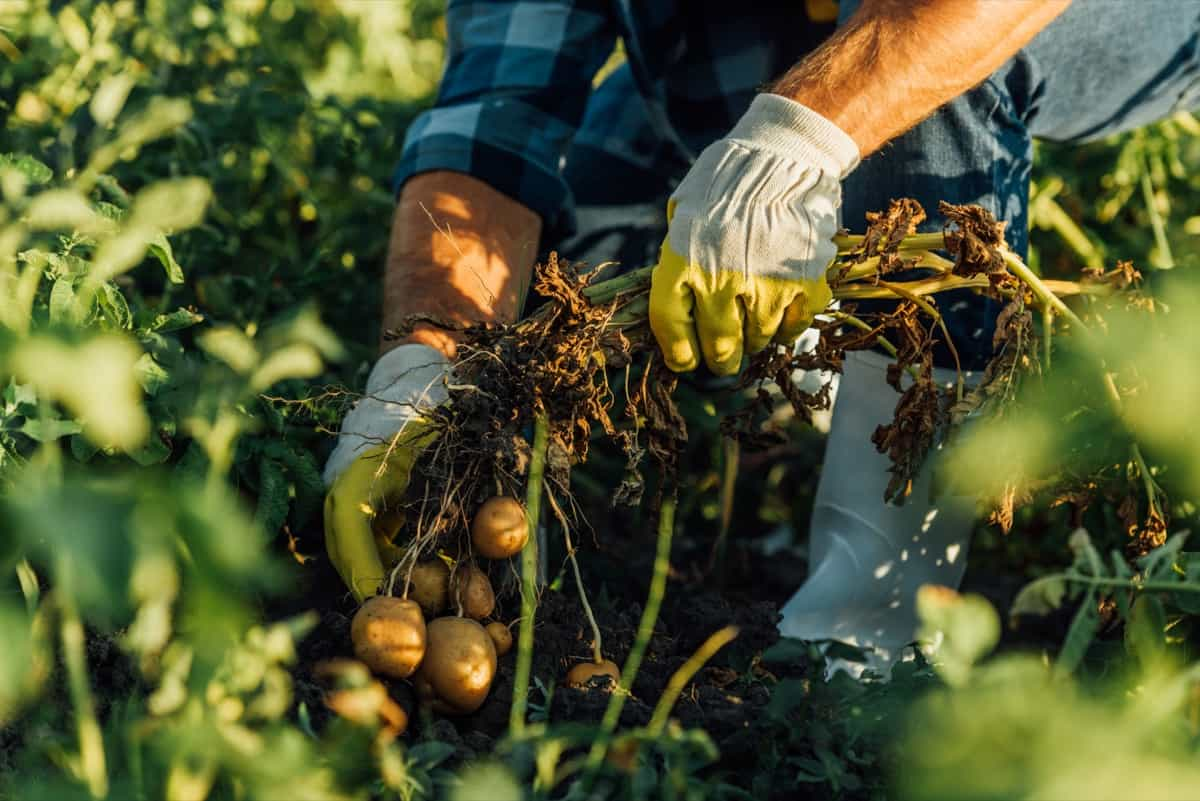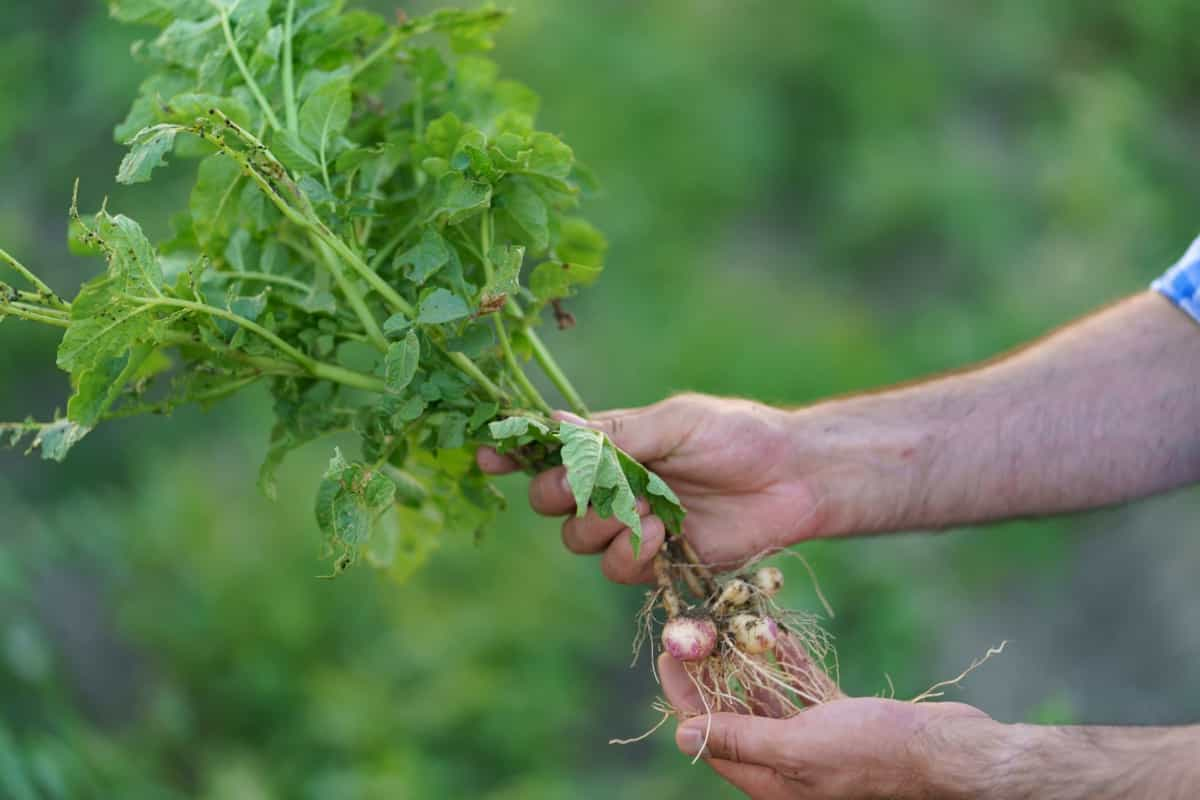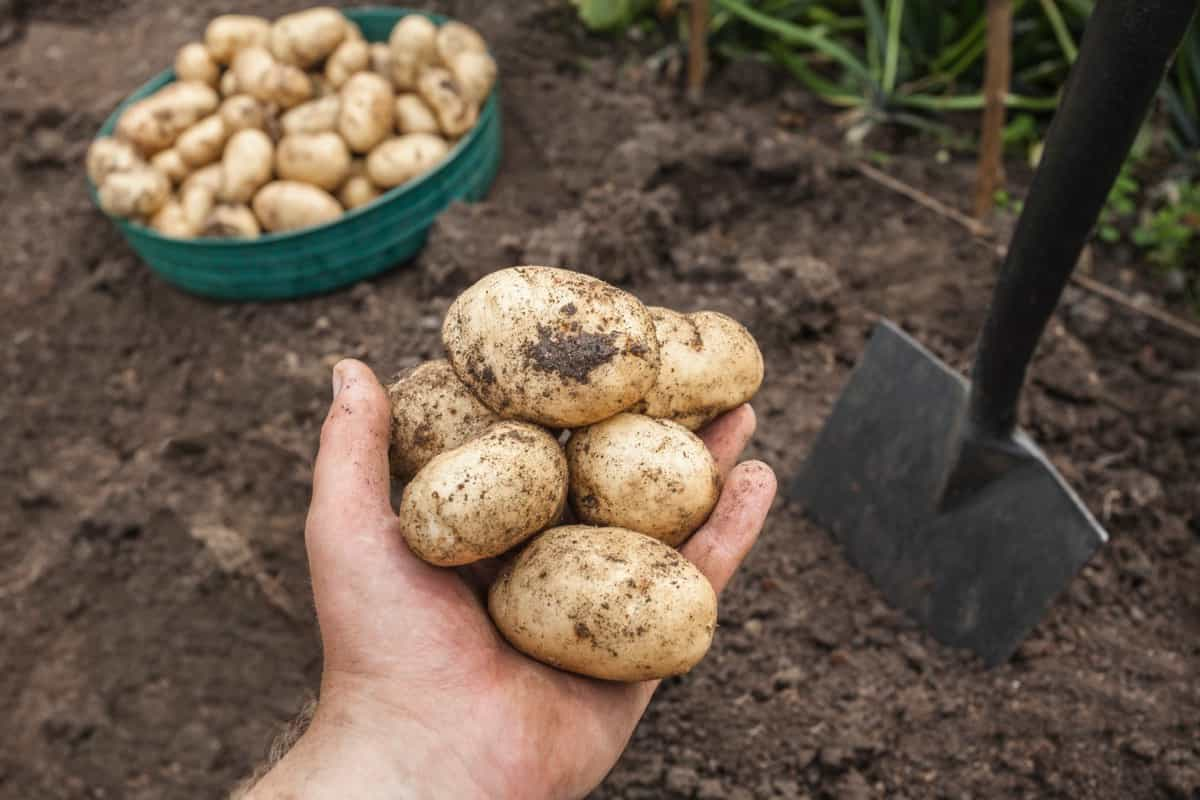Potatoes (Solanum tuberosum) are susceptible to various fungal diseases that are able to impact yield and quality significantly. Fungal infections constantly threaten potato crops, necessitating effective management strategies. If left unchecked, these diseases lead to substantial economic losses for farmers.

Implementing preventative and control measures is crucial for maintaining a healthy potato crop. Natural and organic treatments are gaining popularity as environmentally friendly alternatives to conventional methods. In this guide, we delve into the common fungal pathogens affecting potatoes and explore natural and organic approaches for their control and prevention.
Management of Fungal Diseases in Potatoes
Understanding the Common Fungal Pathogens Affecting Potatoes
Several fungal pathogens threaten potato cultivation, including Phytophthora infestans (late blight), Alternaria solani (early blight), and Rhizoctonia solani (black scurf). Late blight, notorious for causing the Irish potato famine, thrives in humid conditions, while early blight and black scurf persist in various climates.
These pathogens can lead to foliar damage, tuber rot, and yield reduction. Understanding the life cycles and conditions favoring these fungi is crucial for effective management. Organic and natural treatments offer sustainable solutions, focusing on disease prevention, resistant varieties, and environmentally friendly fungicides to safeguard potato crops.
Symptoms and Identification of Fungal Diseases in Potatoes
Common symptoms include dark lesions on leaves, stems, and tubers, often accompanied by a fuzzy mold or powdery coating. Early blight, caused by Alternaria solani, manifests as concentric rings on leaves, while late blight, caused by Phytophthora infestans, results in dark, water-soaked lesions and rapid foliage decay.
White mold, caused by Sclerotinia sclerotiorum, produces fluffy white growth on affected tissues. Rhizoctonia solani induces black scurf on tubers, and Fusarium spp. may cause wilt and yellowing. Proper identification involves monitoring for characteristic symptoms, utilizing field guides, and employing diagnostic tools such as DNA tests.
Importance of Natural and Organic Treatment for Fungal Diseases in Potatoes
In potatoes, natural and organic treatments for fungal diseases are crucial for sustainable agriculture, minimizing environmental impact, and ensuring food safety. Unlike synthetic chemicals, organic treatments harness biological control agents, such as beneficial microbes and fungi, to combat pathogens without harmful residues.
In case you missed it: How to Control Sweet Potato Pests Naturally: How to Get Rid of Them with Natural and Organic Treatment

This approach promotes soil health and biodiversity while preserving beneficial insects. Additionally, organic treatments often enhance the resilience of potato plants by fostering a balanced ecosystem. By avoiding synthetic pesticides, these methods contribute to healthier produce, reducing risks to human health and providing consumers with chemical-free options.
Cultural Practices for Managing Fungal Diseases in Potatoes
Crop rotation disrupts disease cycles, preventing the buildup of soil-borne pathogens. Proper spacing and ventilation reduce humidity, minimizing conditions conducive to fungal growth. Timely planting and harvesting and removing and destroying infected plant debris limit disease spread. Choosing disease-resistant potato varieties strengthens overall crop resilience.
Well-drained soils and proper irrigation practices further deter fungal pathogens. Combined, these cultural practices are integral to an integrated pest management strategy, promoting sustainable and environmentally friendly approaches to safeguarding potato crops from fungal diseases.
Crop Rotation as a Strategy for Controlling Fungal Diseases in Potatoes
Crop rotation is a vital strategy for controlling fungal diseases in potatoes. This practice involves alternating the types of crops planted in a specific field over successive seasons. Fungi that target potatoes often depend on specific host plants, and crop rotation disrupts their life cycle, reducing disease pressure.
The buildup of soil-borne pathogens is mitigated by planting non-host crops between potato seasons. This break in the disease cycle helps prevent the recurrence of fungal infections, promoting soil health and sustainable agriculture. Crop rotation is an essential component of integrated disease management, contributing to increased resilience of potato crops and reduced dependence on chemical interventions.
Best Irrigation and Drainage Techniques to Prevent Fungal Diseases in Potatoes
Use drip irrigation or garden hoses to deliver water to the soil, minimizing leaf wetness and reducing the favorable conditions for fungal growth. Avoiding overhead irrigation helps prevent water splashing, which can spread fungal spores. Maintaining proper soil drainage is essential to prevent waterlogging, a condition that can create a conducive environment for root and tuber infections.
Well-drained soils ensure optimal oxygen levels and discourage the proliferation of soil-borne pathogens. Combining these irrigation and drainage practices promotes a dry and healthy potato-growing environment, reducing the risk of fungal diseases and contributing to overall crop success.
Resistant Potato Varieties to Fight with Fungal Diseases in Potatoes
Selecting resistant potato varieties is a key strategy in combating fungal diseases. Varieties bred for resistance to specific pathogens, such as late blight (Phytophthora infestans) or early blight (Alternaria solani), offer a natural defense against these common fungal threats. Resistant cultivars often exhibit reduced susceptibility or improved tolerance, minimizing the need for chemical interventions.
In case you missed it: How to Kill Dog Fleas and Ticks with Neem Oil: Right Mix for Homemade Neem Oil Flea Spray Recipe

Incorporating such varieties into potato cultivation enhances disease management and contributes to sustainable agriculture practices by reducing reliance on fungicides. Regularly monitoring and adapting resistant varieties align with an integrated approach, fortifying the potato crop against fungal challenges.
Biological Control Methods for Managing Fungal Diseases in Potatoes
Beneficial microbes and fungi, like Trichoderma spp. and Bacillus subtilis, act as natural antagonists, suppressing pathogen growth. Introducing predatory organisms such as nematodes or parasitic wasps can target specific fungal pests. Furthermore, using biopesticides from living organisms offers a sustainable alternative to synthetic chemicals.
These biological control strategies enhance soil biodiversity, promote ecological balance, and reduce the environmental impact of disease management. Integrated with other cultural practices, biological controls form a holistic approach, contributing to potato crops’ overall health and resilience against fungal diseases.
Organic Fungicides and Biopesticides for Treating Fungal Diseases in Potatoes
Organic fungicides and biopesticides are vital for treating fungal diseases in potatoes sustainably. Copper-based solutions, neem oil, and sulfur are effective organic fungicides, offering control against various pathogens. Biopesticides like Bacillus thuringiensis and Trichoderma harzianum act as natural antagonists, targeting specific fungal pests.
These alternatives reduce the ecological impact associated with synthetic chemicals, providing environmentally friendly solutions. Embracing organic and biopesticide treatments aligns with sustainable agricultural practices, ensuring healthier produce and minimal residues and contributing to the overall balance of ecosystems in potato cultivation.
Integrated Pest Management (IPM) Strategies for Control of Fungal Diseases in Potatoes
Crop rotation disrupts disease cycles, reducing soil-borne pathogens, while selecting disease-resistant potato varieties strengthens natural defenses. Proper irrigation methods, such as drip or soaker hoses, minimize leaf wetness, creating an inhospitable environment for fungal growth. Biological control, using beneficial organisms like Trichoderma and Bacillus spp., acts as natural antagonists against pathogens.
In case you missed it: How to Deal with Japanese Beetles in Flower and Vegetable Gardens

Regular monitoring for early signs of infection allows timely intervention. Organic fungicides, such as copper-based solutions and neem oil, can be applied judiciously. Combining these strategies mitigates the reliance on chemical treatments, preserving environmental health, promoting sustainable agriculture, and enhancing the overall resilience of potato crops against fungal diseases.
Conclusion
In conclusion, managing fungal diseases in potatoes requires a comprehensive strategy that embraces natural and organic treatments. By minimizing reliance on synthetic chemicals, this holistic management ensures healthier produce and fosters sustainability, environmental well-being, and the long-term resilience of potato crops against fungal threats.
- Beneficial Insects in Pest Management
- Natural Solutions for Pest Control in Flower Gardens
- Types of Fungicides Used in Agriculture
- Common Issues in the Fruit Development Stage of Pomegranate Farming
- Fruit Development Issues in Papaya: Easy Solutions and Treatment
- Soil-Borne Diseases and How to Protect Your Plants
- Practices to Prevent Disease Spread in the Garden
- From Wilted to Thriving: How to Treat Root Rot Naturally in Houseplants
- Natural Remedies to Cure Brown Spots on Fig Tree Leaves